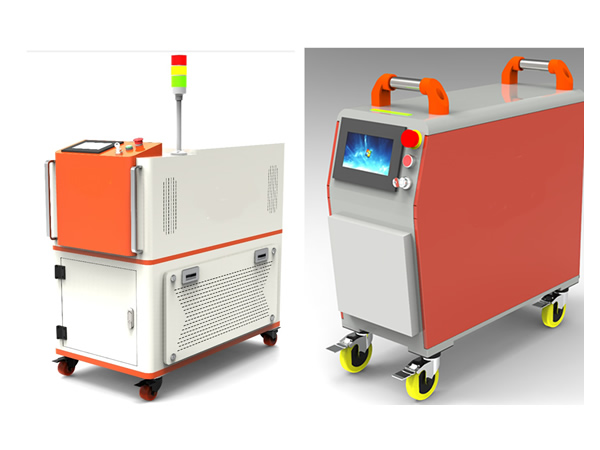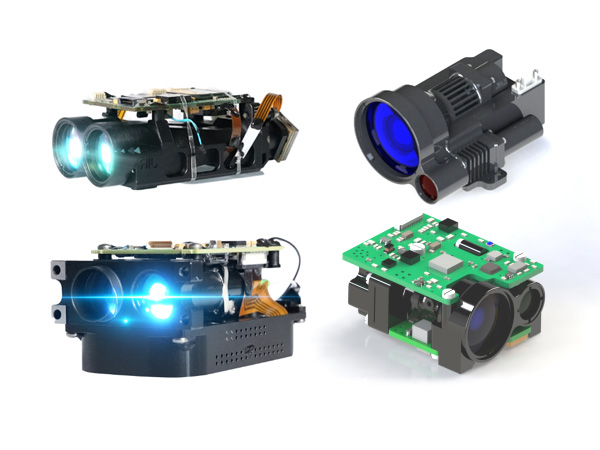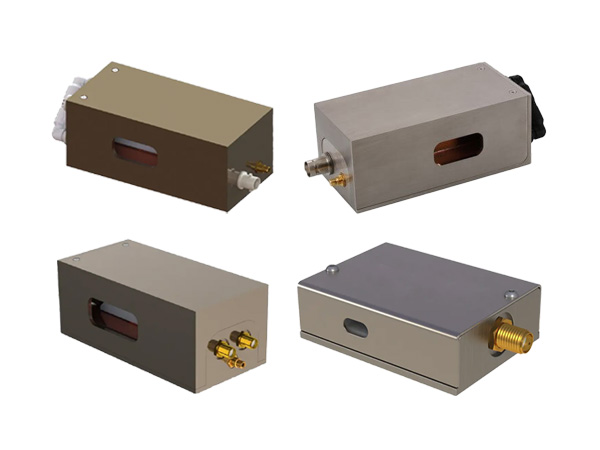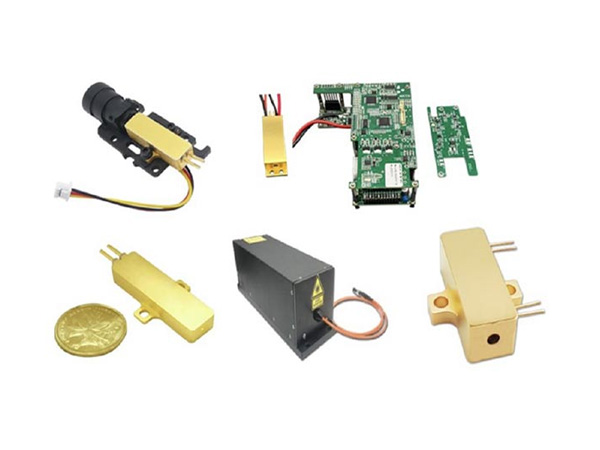Choosing the Right Galvanometer and Servo for the Job
Galvanometer-based optical scanners are the preferred positioning solution for an increasingly broad range of industrial, scientific, imaging, and medical laser applications. While a number of scanning approaches are available, galvanometer-based scanners — commonly called “galvos” — offer flexibility, speed and accuracy at an attractive cost. While many imaging applications take advantage of the galvo’s ability to provide a constant velocity for superior image quality, other vector-based scanning applications benefit from the fast step response times of modern galvos. With continued advances in galvo and servo technology, the devices today offer closed loop bandwidths of several kilohertz even for larger beams, step-response times in the 100-&s range, max rms frequency >2kHz, single microradian- level positioning resolution, lower costs per axis and flexible positioning control to describe a variety of motions across wide angles.
This has enabled new levels of performance in laser marking and other material processing applications, via drilling, high resolution print and imaging applications, DNA analysis and drug discovery systems, and low cost biomedical systems that bring screening and detection capabilities from the research lab to the doctor’s office. The design requirements of each application, however, place varying emphasis on speed, accuracy, size and cost.Fortunately, the many galvo configurations and capabilities enable system designers to select the optimal product for the requirements of the target application.
Components and Technology
A galvo system consists of three main components: the galvanometer, the mirror (or mirrors) and the servo driver that controls the system. As galvo systems offer higher speeds and performance, the correct design and proper selection among these components becomes increasingly important to achieving maximum performance. As galvo systems have reached 100-&s step times and rms frequencies have reached >2kHz, many of the design rules and principles that applied when system-positioning performance was measured in milliseconds are no longer adequate.
The Galvanometer
The galvo itself has two major parts: the actuator that manipulates the mirror load and the integral position detector that provides mirror position information to the closed loop system.
Two actuator configurations commonly serve today’s high-performance systems. The moving magnet, in which the magnet is part of the rotor and the coil is part of the stator, provides the highest system-resonant frequencies because of its uniform rotor design. The moving coil, in which the coil is integral to the rotor and in which the magnet is part of the stator, offers the highest torque-to-inertia ratio and the highest torque efficiency.In the two common types of position detectors, the detector element moves as part of the galvo rotor structure. In the moving dielectric capacitive design, a radiofrequency source drives two variable capacitors, and the resulting rectified differential currents report the position of the galvo actuator and mirror. In the new optical position detector designs, a light source illuminates parts of four photocells. Between the light source and the receivers, a moving butterfly like shape casts more or less shadow onto pairs of the receiver cells. The resulting currents report the position of the galvo actuator and mirror.
The design of the positioning detector greatly defines the positioning accuracy of the system, and its inertial and resonant frequency characteristics affect the speed of the system. The compact, low-noise and low inertia features of our patented optical position detectors provide higher speed, smaller size, and reduced cost compared with capacitive devices, without sacrificing accuracy or stability. Moreover, some capacitive detectors can emit RF electrical noise that can interfere with nearby electronics in the system and this noise is eliminated with optical position detectors.The Mirror
The mirror is an important component of the system, particularly at increased speeds. Its design can make or break the design goals for speed and accuracy.At the most basic level, a mirror or mirrors must hold the required beam diameter over the required angular range specified in the typical application. The mirror thickness, profile, cross section and materials (most commonly synthetic fused silica, silicon or beryllium) are all important. They influence the system’s inertia as well as the stiffness and resonant frequency of the actuator and mirror assembly.
Increases in stiffness and resonant frequency that do not greatly add to total system inertia enable faster response times and higher bandwidth. Therefore, the mirror design affects not only the optical path and cost of the galvo system, but also the speed and accuracy of the overall system.In two-axis steered-beam systems, a distance between the axes of rotation and the available angular range of the design usually requires the second mirror in the system to be larger than the first. Because of this, the second mirror can be the component that limits the speed of the entire two axis system, making its design and construction critical. In an optimized two-axis design, the second mirror in such a system will provide only slight limits to system speed, as compared with the first mirror.
The Servo Driver
The final component of the galvo system is the servo circuitry that drives the galvo and controls the position of the mirror. The servo demodulates the position detector’s current output signals, compares them with the commanded position signal and drives the actuator to bring the galvo to the desired position, forcing error between the signals nearly to zero.
Typical servos use a combination of the detected position, galvo drive current, angular velocity, and error or integral-of-error signals to enable closed-loop system control at the desired positioning speed and accuracy. Just as there have been many advances in the design of actuators and position detectors, ongoing developments in servo electronics have been critical to taking the fullest advantage of galvo advances in bandwidth and rms capability. New digital servo architectures such as State-Space, have pushed galvo performance beyond what was achievable with analog or digital PID servos.Analog Servo Configurations
Two analog servo configurations commonly optimize or balance the speed and accuracy requirements, which often compete in importance. An integrating servo, referred to as Class 1, or PID (Proportional-Integral-Derivative), uses integrated position error to settle to the highest level of positioning accuracy with the least angular error. Applications that value precision over speed often rely on integrating Class 1 servo controllers. A non-integrating servo, or Class 0, can provide higher system speeds because it avoids the integration time. This configuration is used when some precision (up to approximately 100 &rad) is sacrificed to increase the speed, often by 10 percent or more. Many of the highest-speed applications rely on non-integrating Class 0 servos.Beyond PID Servos
New digital state-space servo architectures have optimized the performance of galvos by substantially reducing or eliminating the "tracking error" that is prevalent in PID (analog or digital) servos. Reduced tracking error allows users to eliminate software delays in their motion programs that were inserted to compensate for the time variations caused by tracking error, and the overall galvo performance (primarily in vector type applications) is greatly improved. In laser marking applications, it is typical to see marking speeds increase 2x to 4x once this tracking error is eliminated. Other advantages of digital servos often include self-tuning or computer-assisted tuning.Motion Categories
While there are many types of beam positioning motions or command structures employed in laser systems, most can be classified as either random or repetitive in nature. Of these, the most common are vector, raster and step-and-hold positioning motions. An appreciable ingredient in successful laser system design today is the intelligent command and control of the signals given to the scanner system.Vector Positioning
In vector-positioning applications such as laser marking and other forms of industrial materials processing, beam motion may be structured into a series of small angular vectors or steps for process consistency and maximum material throughput. The use of small steps maximizes efficiency by minimizing the settling time variation, and delays associated with large-angle movements, which may be limited by voltage or current restrictions, galvo torque, thermal limitations or electrical saturation within the servo control loop. Success is often measured in characters, vectors or steps executed per second.In the fastest vector-positioning applications, the system rarely is stationary between vectors. In meeting these demands, it is often not limited by galvo torque, Galvo power dissipation constraints, power supply levels, etc. Rather, the critical limiting parameter is the closed-loop bandwidth, defined and limited by the resonant frequencies of the combined mirror and galvo, as well as by the servo’s ability to control and suppress the system’s naturally occurring resonant frequencies.
Raster Positioning
For raster-style applications such as printing, scanning laser microscopy, and image capture, the beam or aperture is moved at a constant velocity during the active imaging, forming active lines that are joined by an often faster retrace. During this active imaging time, acceleration (and thereby the current through the galvo coil) is nearly zero. During flyback, the acceleration is high, so current through the galvo coil is high.
The overall operating frequency of the galvo system is limited by the fly back portion of the scan period and its relationship to the active imaging time, also described as the duty cycle or efficiency of the scan. Although it may not be obvious, a more relaxed efficiency often enables a higher operating frequency. When more time is allowed for fly back, current in the scanner is lower, the operating frequency may behigher, and more lines may be printed or gathered per second without thermally limiting the system.
Raster applications typically employ less laser power, and the pixel or spot size and the path length define the beam diameter and mirror/ galvo size requirements. The ability to execute large-angle steps with low cross-scan mirror wobble and timing jitter, together with high galvo power handling capacity, are critical as extreme levels of repeatability from scan to scan at high repetition rates are required. The rigid structure of the moving-magnet actuator, along with its low thermal resistance from coil to case, as in the 62xxH family of galvos, makes it an excellent choice for many raster applications.
A remaining consideration in this application group is the structure of the command waveform(s) sent to the galvo system. A cycloidal command waveform is recommended to manage position, velocity and acceleration discontinuities that can simultaneously limit the image quality and operating frequency. A smooth, “acceleration managed” input aids system performance by limiting the frequency content that is passed to the galvo system. This tends to avoid excitation of the system’s natural resonances, enabling greater image quality. It also lowers the acceleration in the fly back phase, which reduces power in the system. These two factors often allow a better repeatability at a higher operating frequency than is possible using simpler saw tooth shape inputs.Step-And-Hold Positioning
Step-and-hold positioning varies from vector positioning in that the system is commanded to a fixed angle and held as still as possible while the operation is performed. These positioning moves range in frequency and amplitude, though highly accurate and repeatable beam placement is typically required.The most critical galvo system parameters in this type of positioning are an accurate and stable position detector and an efficient, high-torque but low-inertia actuator for fast acceleration and settling to the commanded position. Depending on the goals of the application and, as in raster positioning, managing the command signal to limit the frequency content that is passed on to the scanner system can enhance the step-and-hold result.
Such positioning is available in optical clear apertures ranging from 3- to 50-mm beam diameters across all laser system applications. The moving-coil class of galvo, which features single-microradian repeatability, position detector linearity >99.9 percent and uncompensated scale drift of 50 ppm per degree of temperature change, best serves these applications.Optimizing Performance
The closed-loop galvanometer offers the system designer a powerful combination of speed, accuracy and low cost, as well as a flexibility that is not possible with other scanner technologies. The range of galvos attributes satisfies a variety of applications. Advances in this technology, along with advances in laser technology, continue to widen the galvanometer’s application range, enabling new performance levels, applications and markets. Deriving the highest possible performance in any galvo application requires an understanding of the most critical parameters for positioning speed and accuracy, along with the proper design and selection of the galvo, mirror, and servo driver.
 English
English Français
Français Deutsch
Deutsch euskara
euskara Русский язык
Русский язык Italiano
Italiano Português
Português Nederlands
Nederlands Polski
Polski Greek
Greek Lietuva
Lietuva Türkçe
Türkçe 日本語
日本語 한어
한어 中文
中文 தாமில்
தாமில் فارسی
فارسی हिंदी
हिंदी Tiếng Việt
Tiếng Việt ภาษาไทย
ภาษาไทย Pilipino
Pilipino Indonesia
Indonesia தாமில்
தாமில்





